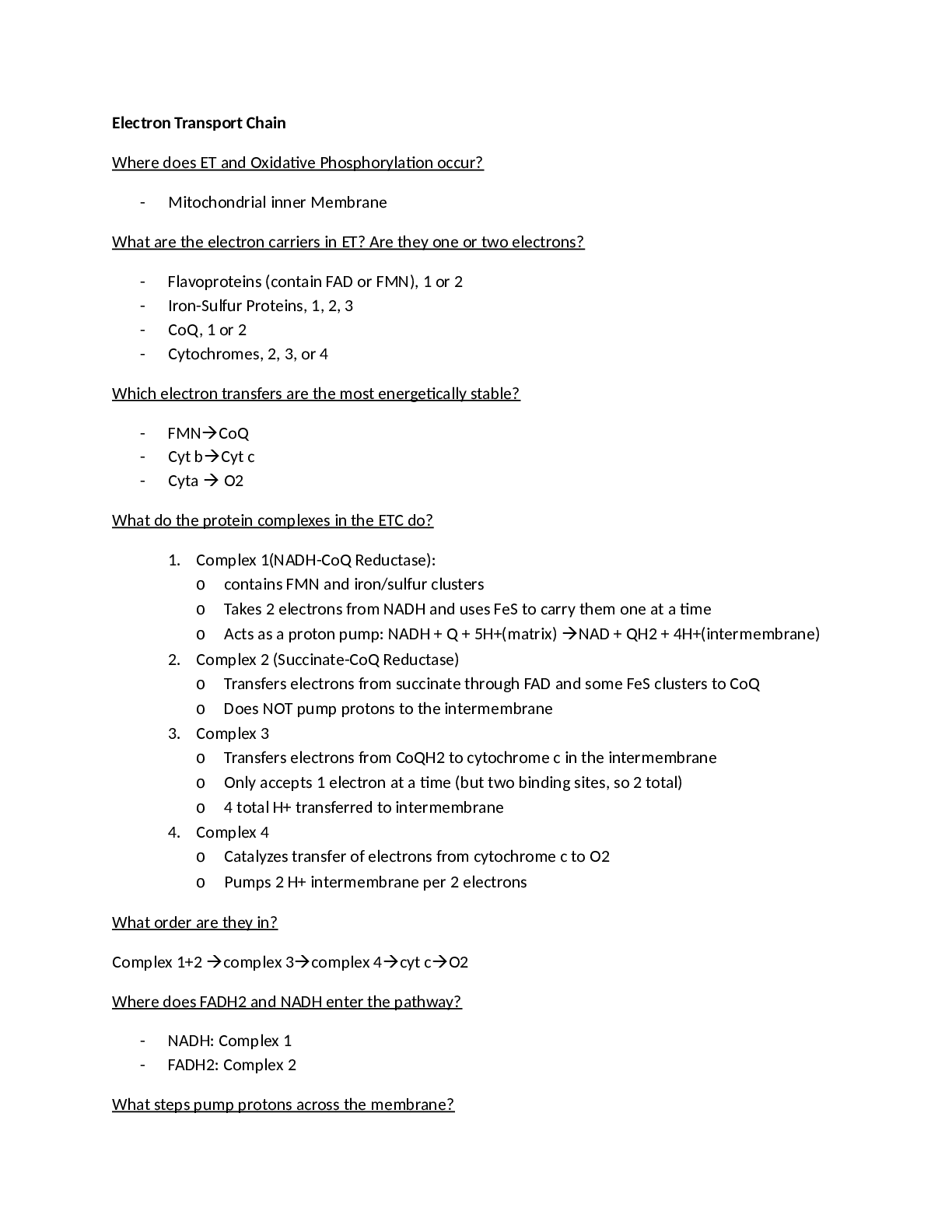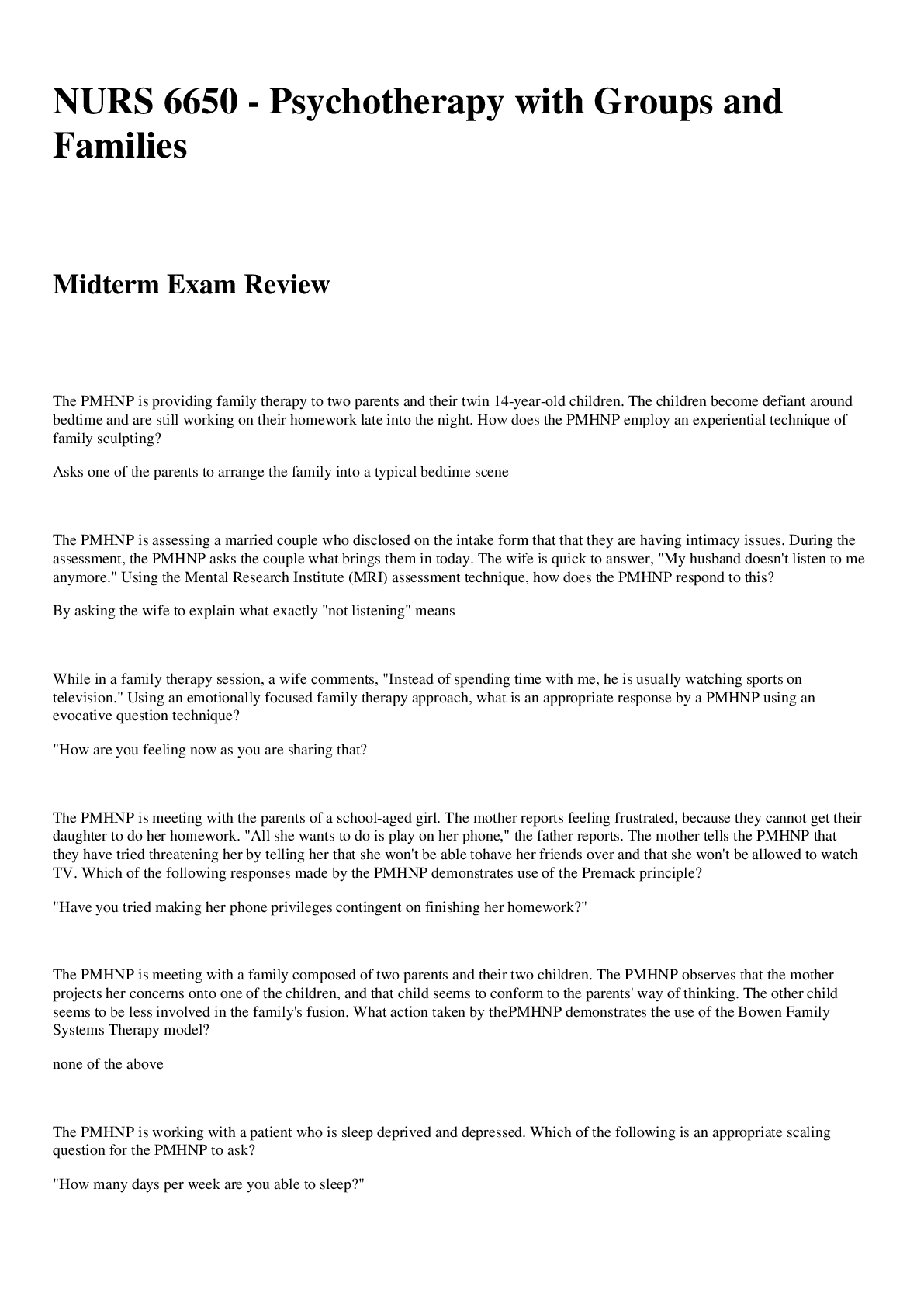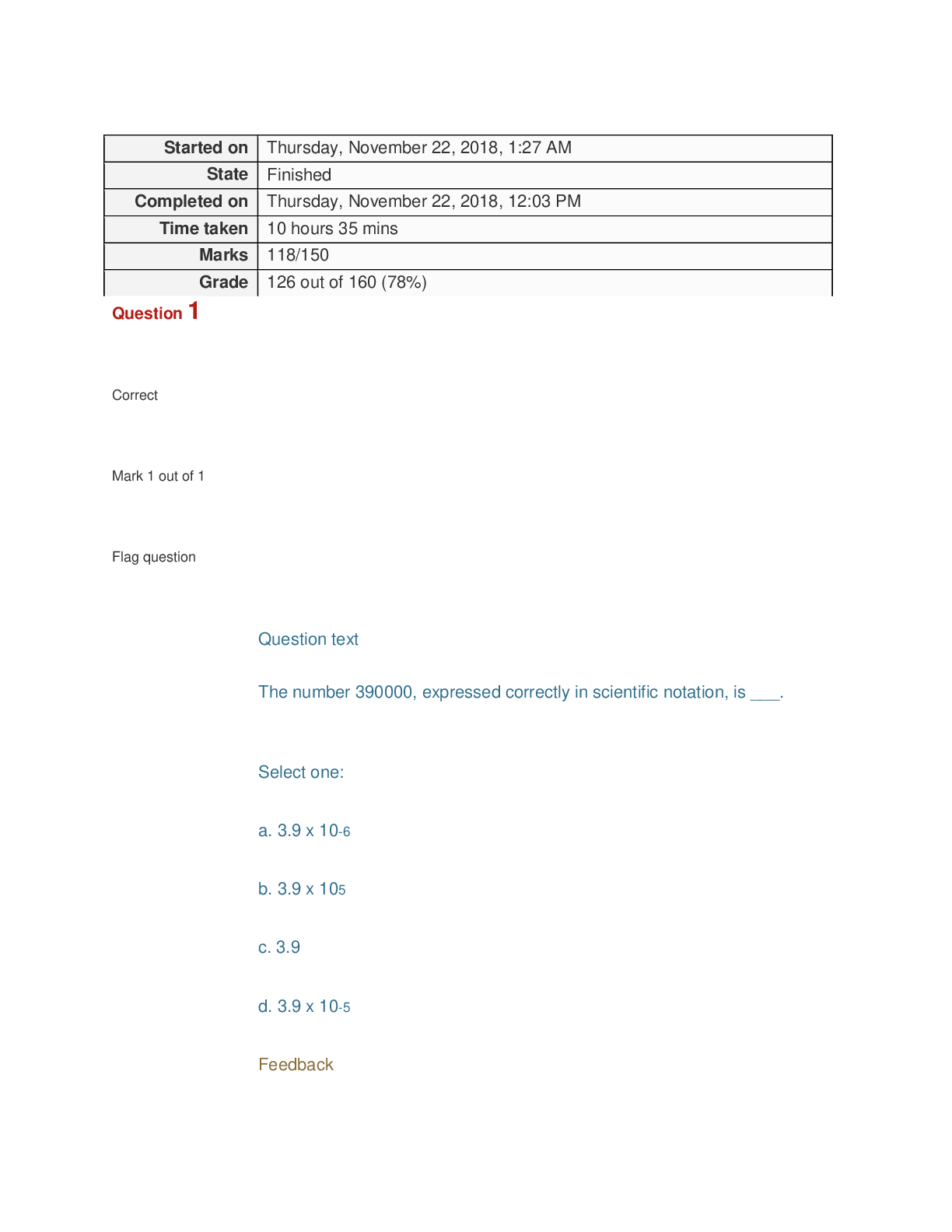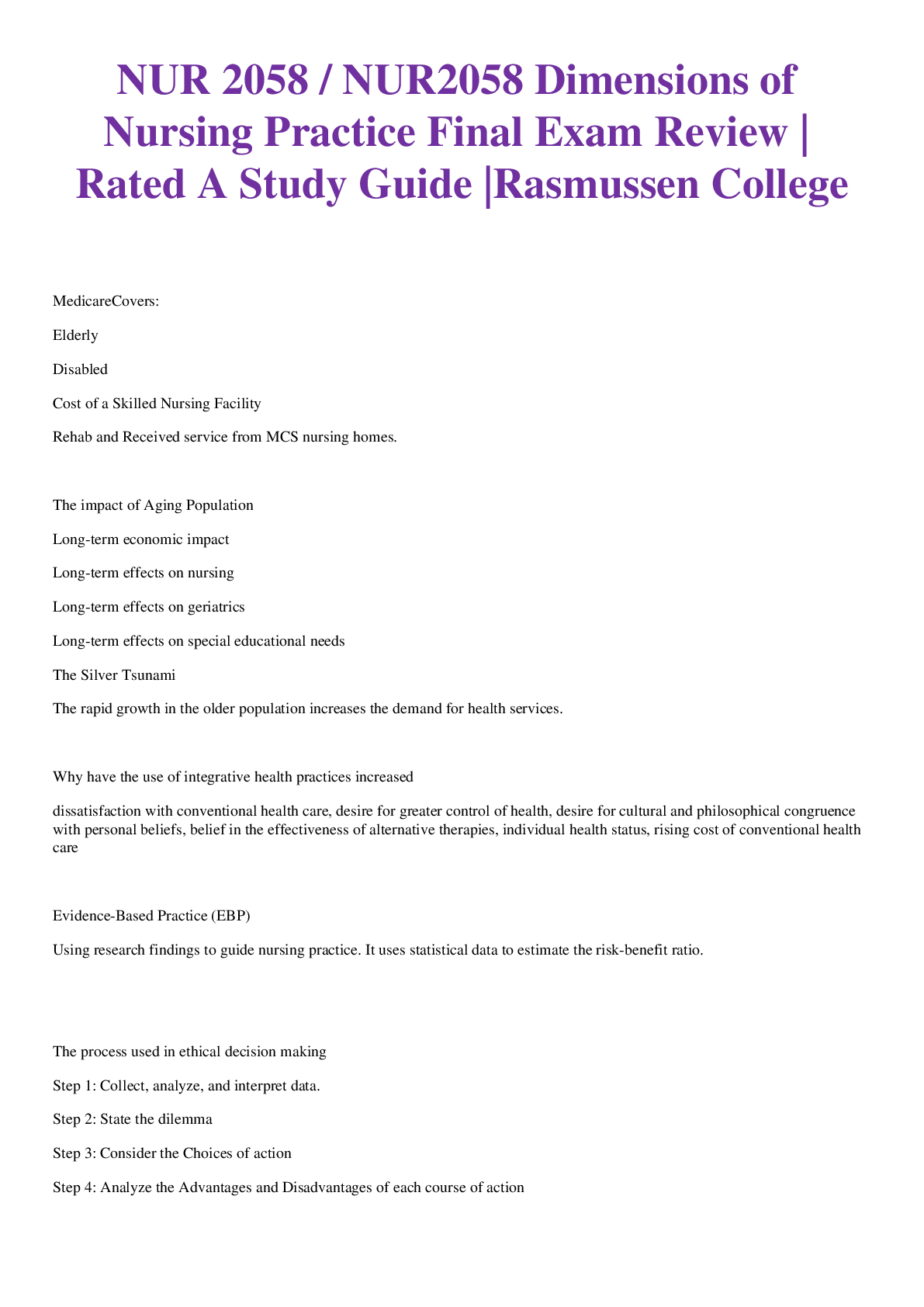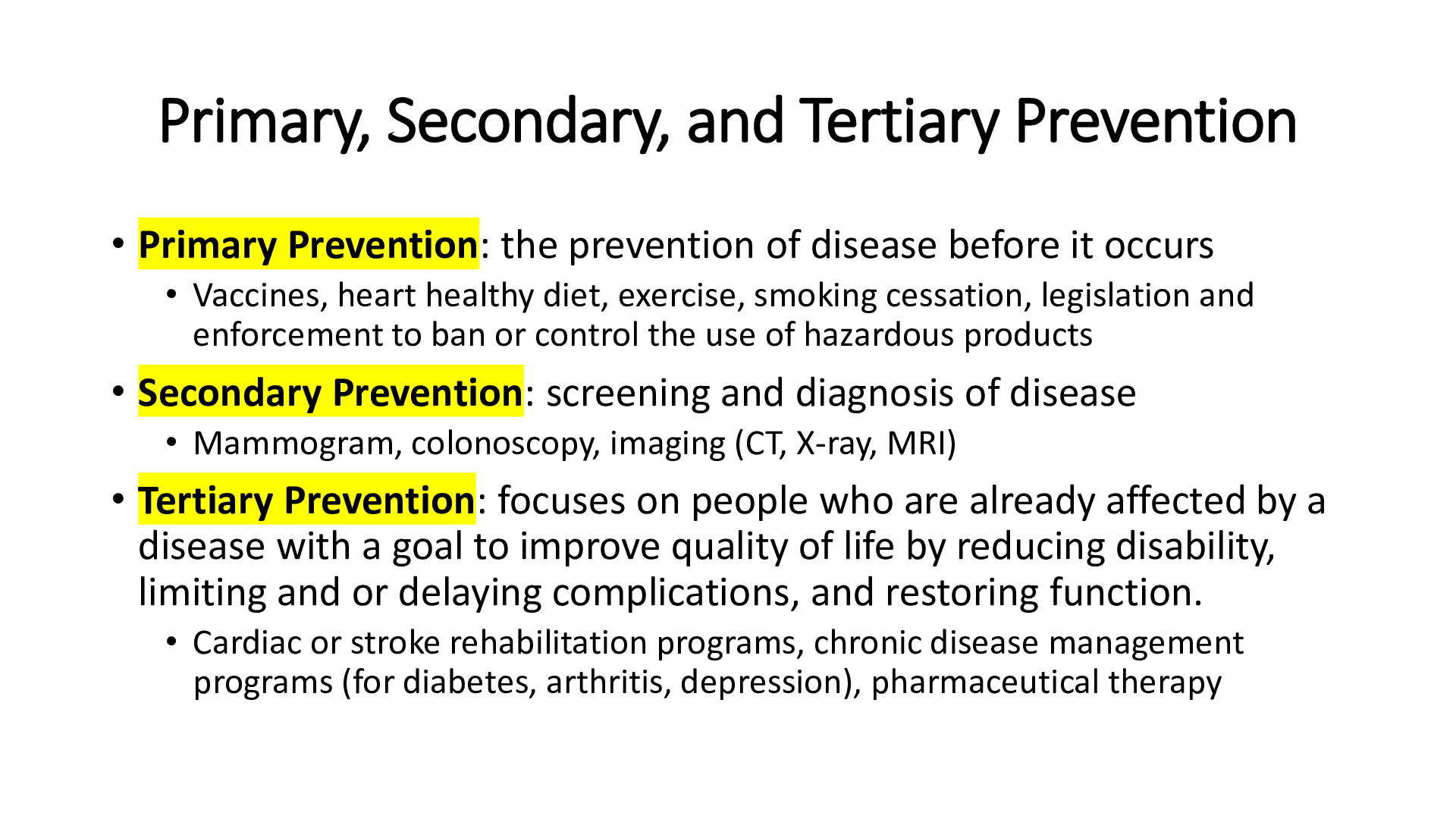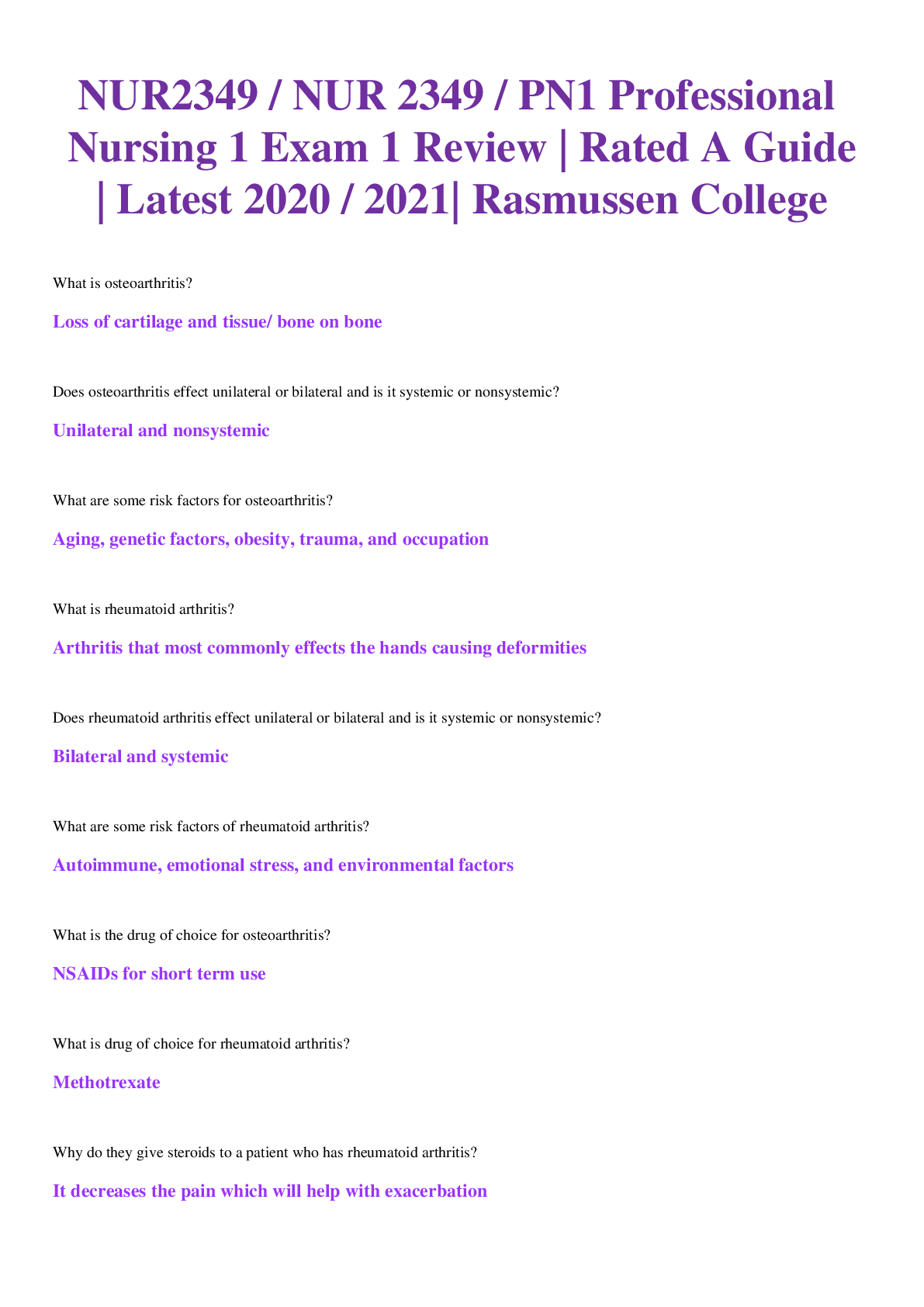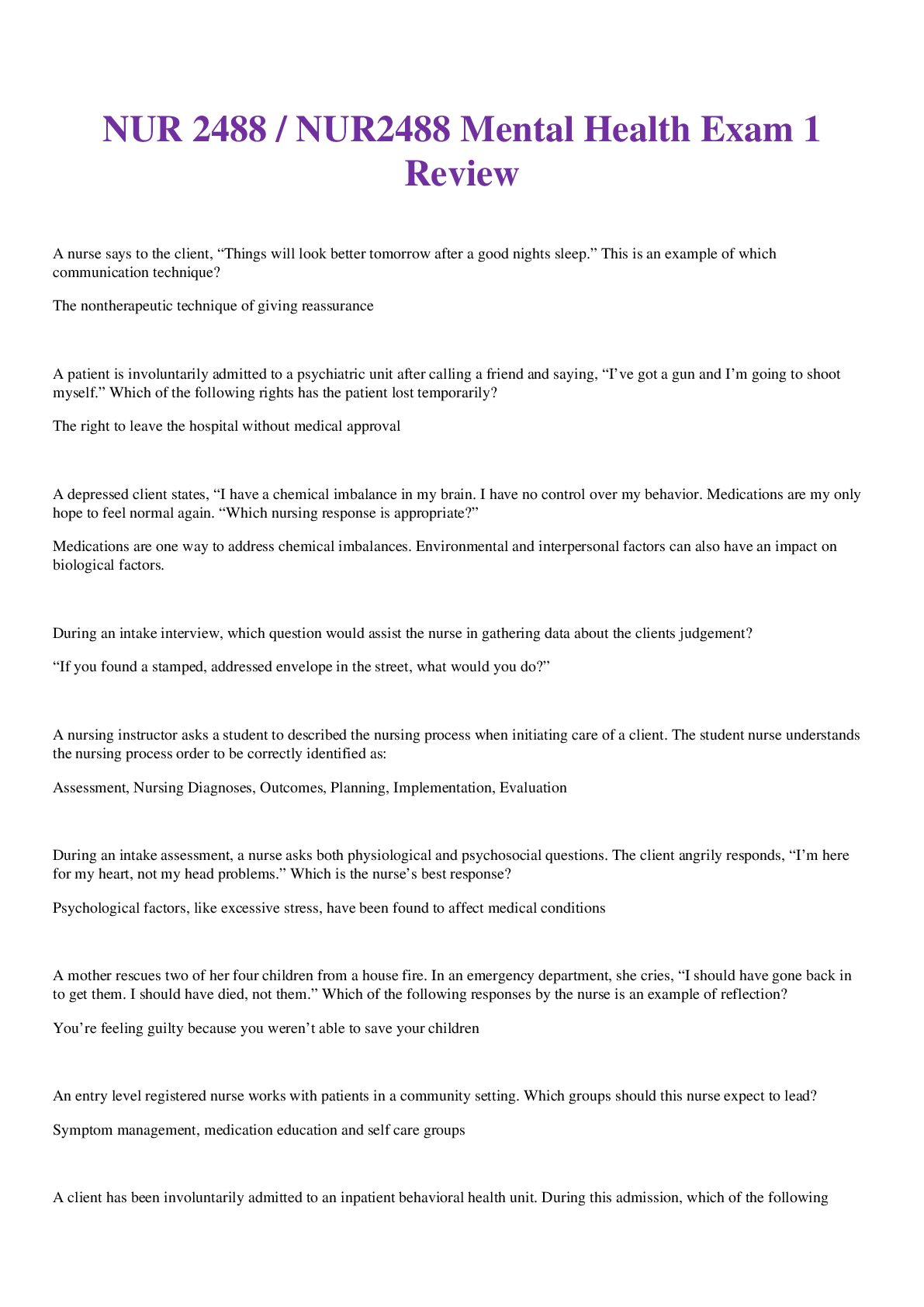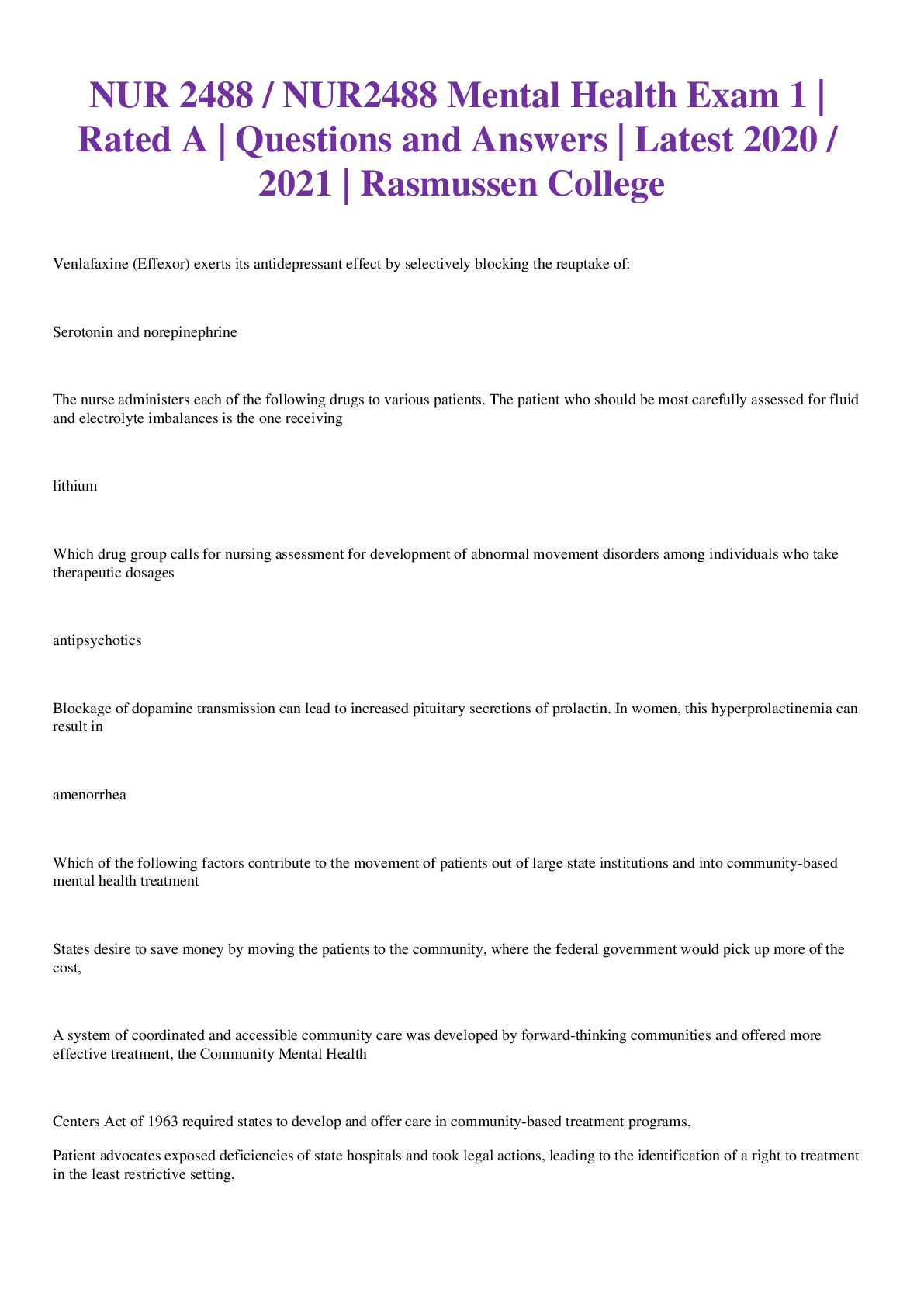*NURSING > EXAM REVIEW > NUR2474 Test # 1 Review (All)
NUR2474 Test # 1 Review
Document Content and Description Below
NUR2474 Test # 1 Review Please review general tips from Quiz review document (test taking strategies, select all that apply questions, etc.). The test will utilize Respondus browser and monitor (usi... ng webcam). No notes or textbook allowed on the test. Calculator will be enabled in the browser. General tips for studying: 1. Memorize names of medication categories from the presentation (SSRI’s, benzodiazepines, first/second generation antipsychotics, etc.) used to treat common neuro conditions (PD, Alzheimer’s disease, BPD, ADHD, etc.) 2. Memorize key drugs from categories above (there are many questions with specific drug names) 3. Use generic names 4. When reviewing particular drugs note category, indications, common side effects, toxicity signs (if applicable) Topics to review: 1. Lithium therapy (blood testing, therapeutic levels, toxicity levels, side effects) Excretion: Short half-life. Excreted by the kidneys. Sodium levels: Lithium excretion reduced when sodium level low. Plasma levels: 0.8 to 1.4 mEq/L Excessive lithium levels. Greater than 1.5 mEq/L Monitor levels every 2 to 3 days at initiation of therapy and then every 3 to 6 months. Lithium toxicity include polydipsia, slurred speech, and fine hand tremors. They also include nausea, vomiting, persistent gastrointestinal upset, diarrhea, clonic movements, hyperirritability of muscles, muscle weakness, and hypotension. Therapeutic side effects: Gastrointestinal effects, Tremors, Polyuria, Renal toxicity, Goiter and hypothyroidism, Teratogenesis Side effects: Slurred speech, Unsteadiness Lithium is used for long-term maintenance and stabilizes mood fluctuations Educate PT that lithium’s full effects can take awhile Monitor therapeutic levels of lithium by testing every 3-6 mos. (0.8- 1.4) 2. BPD patients on Lithium and adjunct meds for mania/depression Lithium helps control acute mania. Preferred drug to treat mania associated with BPD. How lithium regulates mood is unclear but it does change the transport of sodium ions in nerve cells, and that action alters the metabolism of catecholamines (the fight-or-flight hormone) the adrenal glands release in response to stress. It also offers protection against neuronal atrophy and promotes neuronal growth. Antiepileptic drugs (AED)s treat seizures and control the mania/ depression of BPD. (also prevents migraines). Carbamazepine, lamotrigine, and divalproex sodium or valproate First-generation antipsychotics (FGAs)- Block receptors for dopamine in the central nervous system (CNS): Chlorpromazine/ Haloperidol. Used to treat acute mania in BPD Lithium is used for short- term tx; relieves symptoms during manic and depressive episodes and prevents recurrence of manic and depressive episodes Antipsychotics are used for BPD for preventative measures 3. Benzodiazepines and alcohol withdrawal Therapeutic uses- Alcohol withdrawal. Most familiar member: Diazepam [Valium]. Most prescribed: Lorazepam and alprazolam. Safer than general CNS depressants. Lower potential for abuse. Produce less tolerance and physical dependence. Fewer drug interactions Benzo’s can be given during an alcohol withdrawal by suppressing symptoms such as tremors, anxiety, and N/V Benzo’s (-lam, -pam) can also break seizure cycles 4. Alprazolam therapy and anxiety One of the most prescribed Benzodiazepine. Drugs of choice to treat insomnia and anxiety. Used to induce general anesthesia. Used to manage seizure disorders, muscle spasms, panic disorder, and withdrawal from alcohol. Only available in oral form, may develop GI symptoms so take with food. Acute stages of anxiety are treated with Benzo’s (-lam, -pam) 5. Treatment of anxiety patients with sedative/hypnotics Drugs that depress central nervous system (CNS) function: Reduce anxiety and promote sleep. Primarily used to treat anxiety and insomnia. Benzodiazepines, Benzodiazepine-like drugs, Barbiturates. Paroxetine is an SSRI used for anxiety disorders; it affects the serotonin levels General treatment measures (Oral: Gastric lavage, activated charcoal, saline cathartic, and dialysis) 6. Methylphenidate (Ritalin) therapy in children ADHD in children: Signs and symptoms: Inattention, Hyperactivity, Impulsivity, Fidgety, Unable to concentrate. CNS stimulants. Mechanism of action: Selective inhibitor of norepinephrine reuptake Pharmacokinetics: Plasma levels peak within 1 to 3 hours. Metabolized in the liver. Adverse effects: Gastrointestinal reactions. Reduced appetite. Dizziness. Somnolence. Mood swings. Trouble sleeping Educate PT to stick w/ Tx plan and do not modify w/o physician’s advice Do not abruptly stop DO NOT give before breakfast because it suppresses appetite and can cause weight loss [Show More]
Last updated: 1 year ago
Preview 1 out of 12 pages
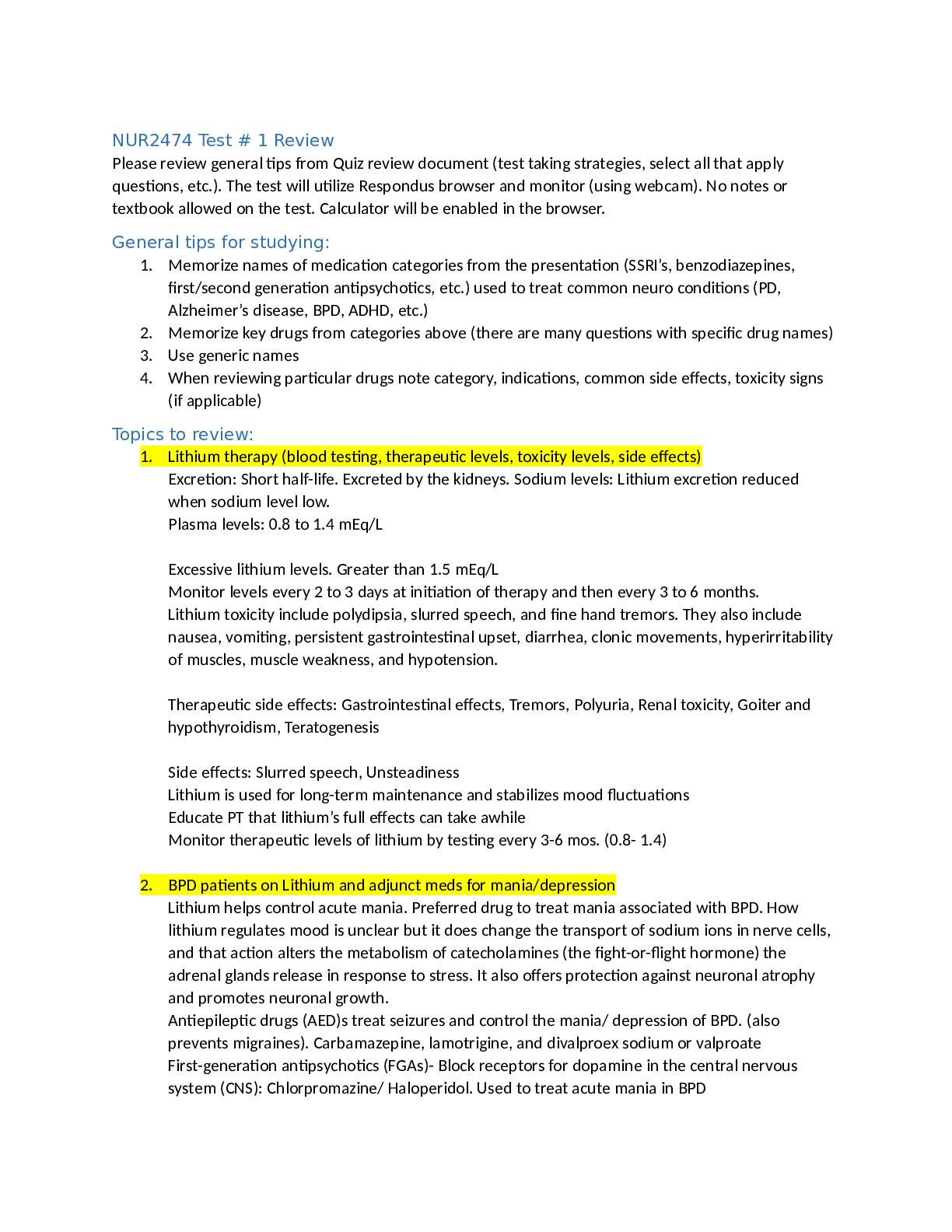
Reviews( 0 )
Document information
Connected school, study & course
About the document
Uploaded On
Aug 03, 2022
Number of pages
12
Written in
Additional information
This document has been written for:
Uploaded
Aug 03, 2022
Downloads
0
Views
56

.png)
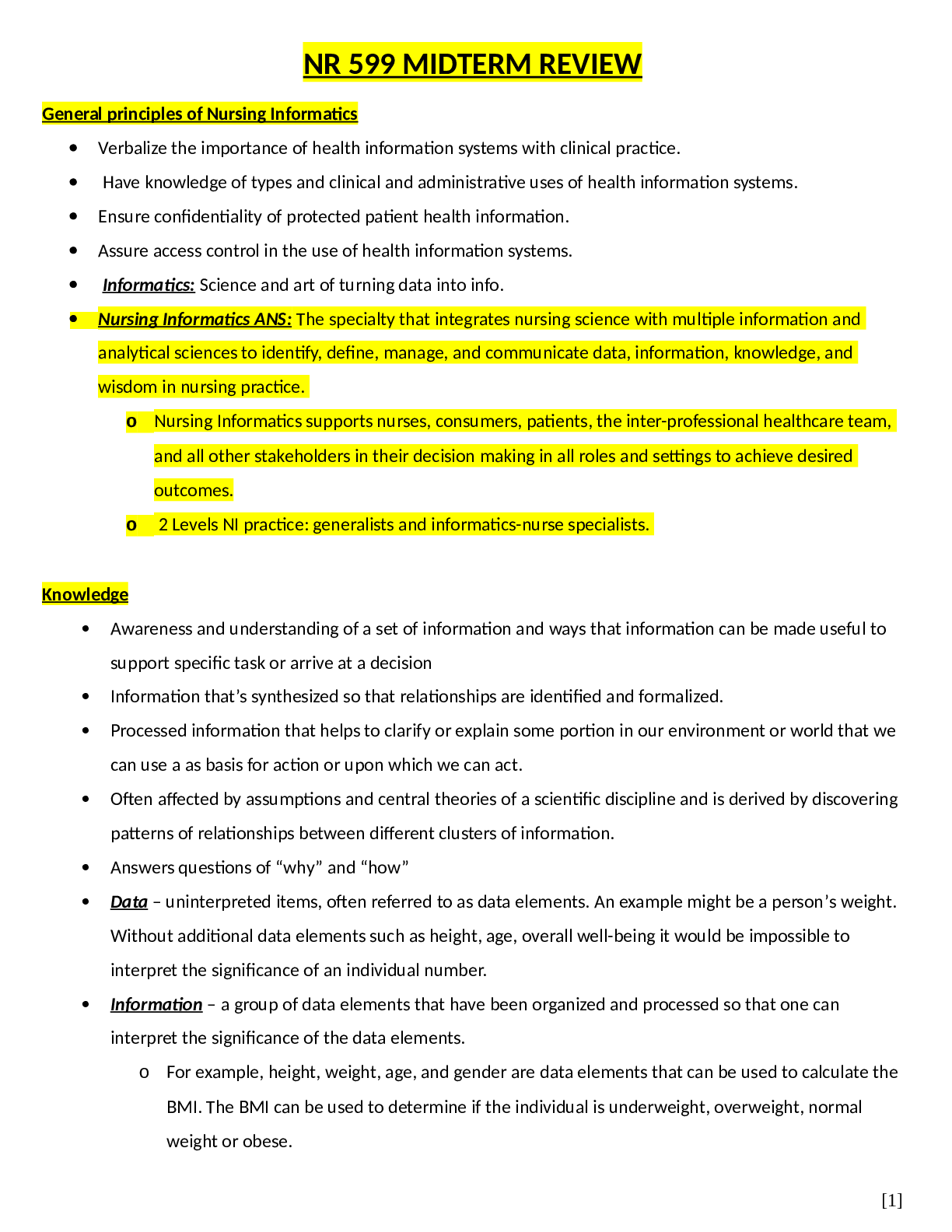
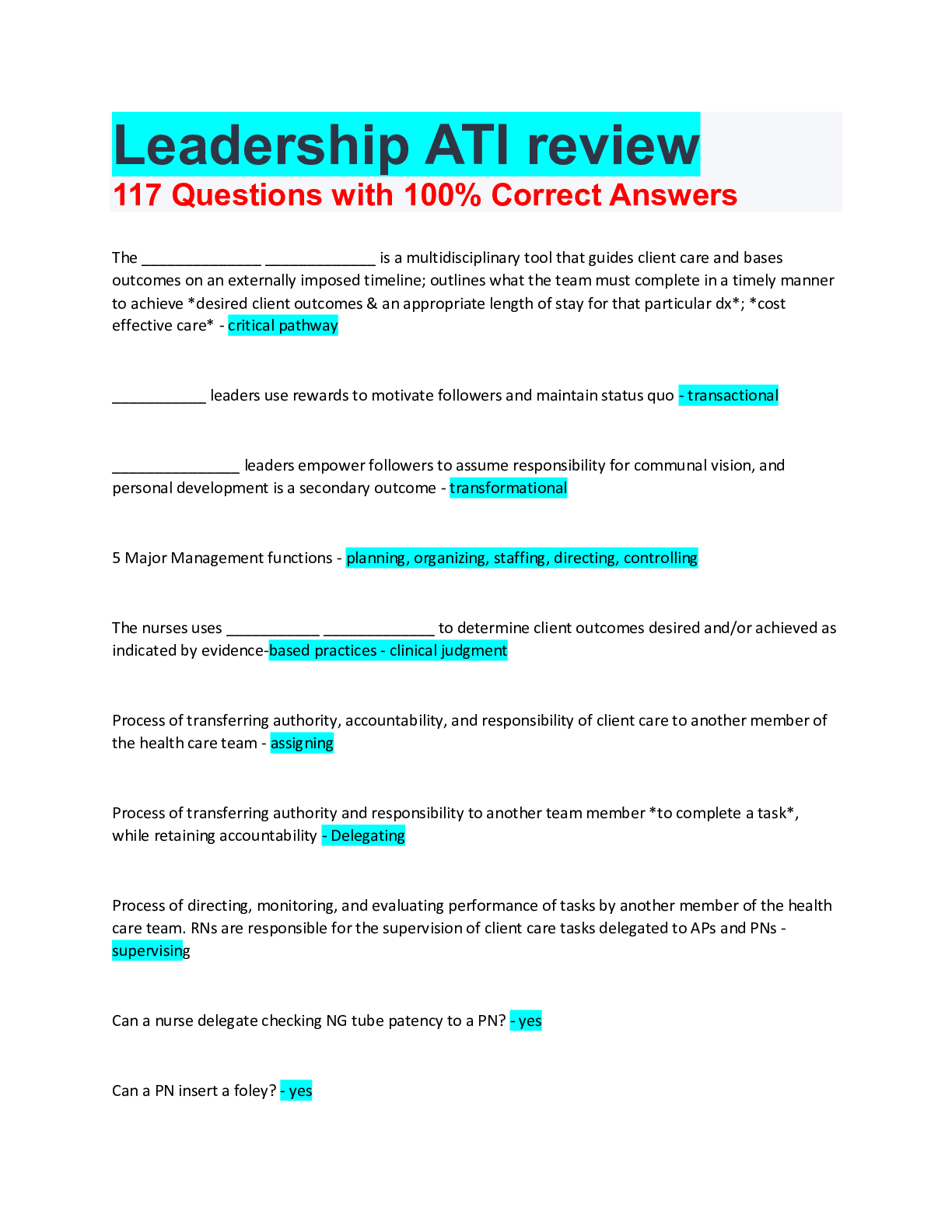
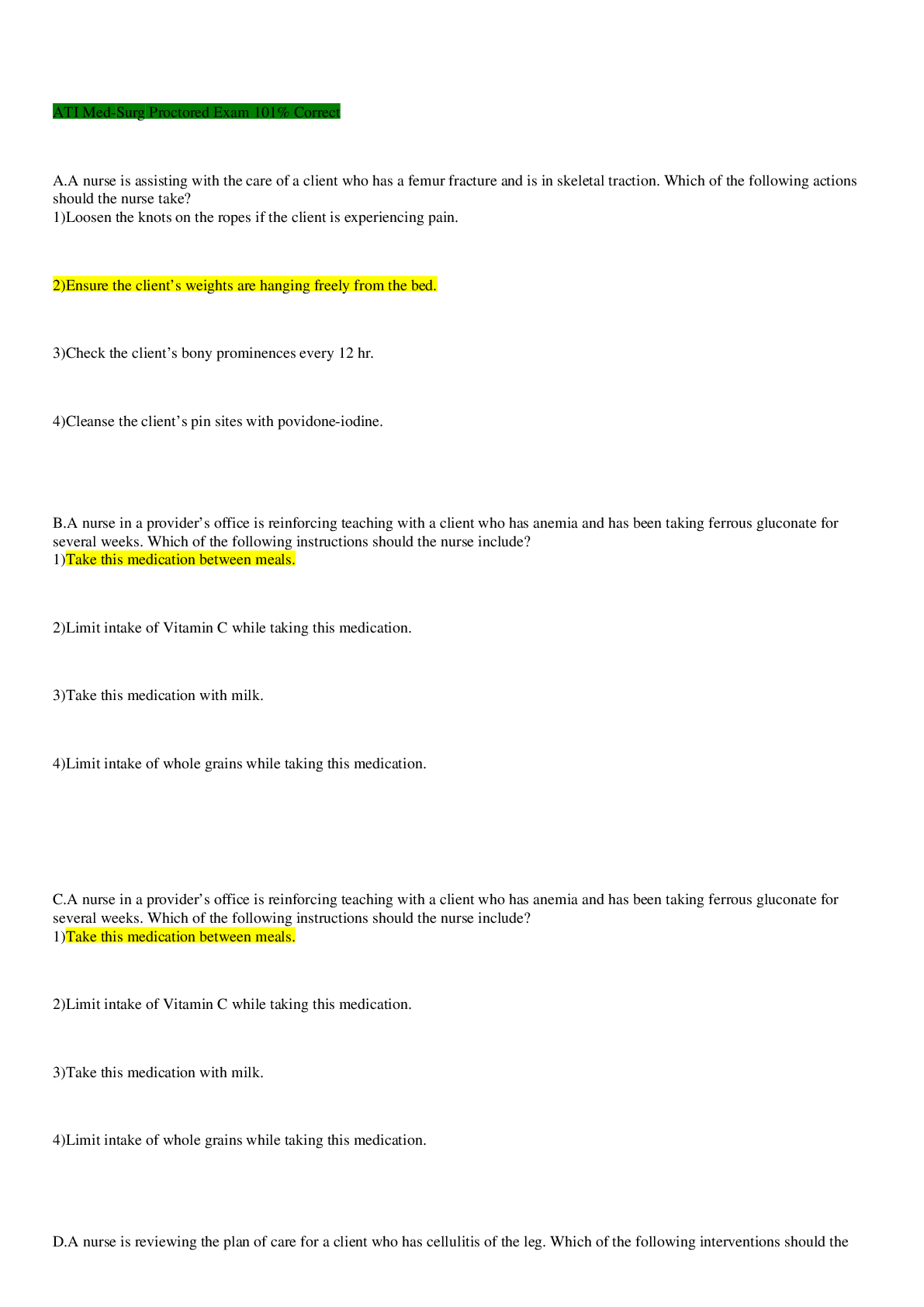
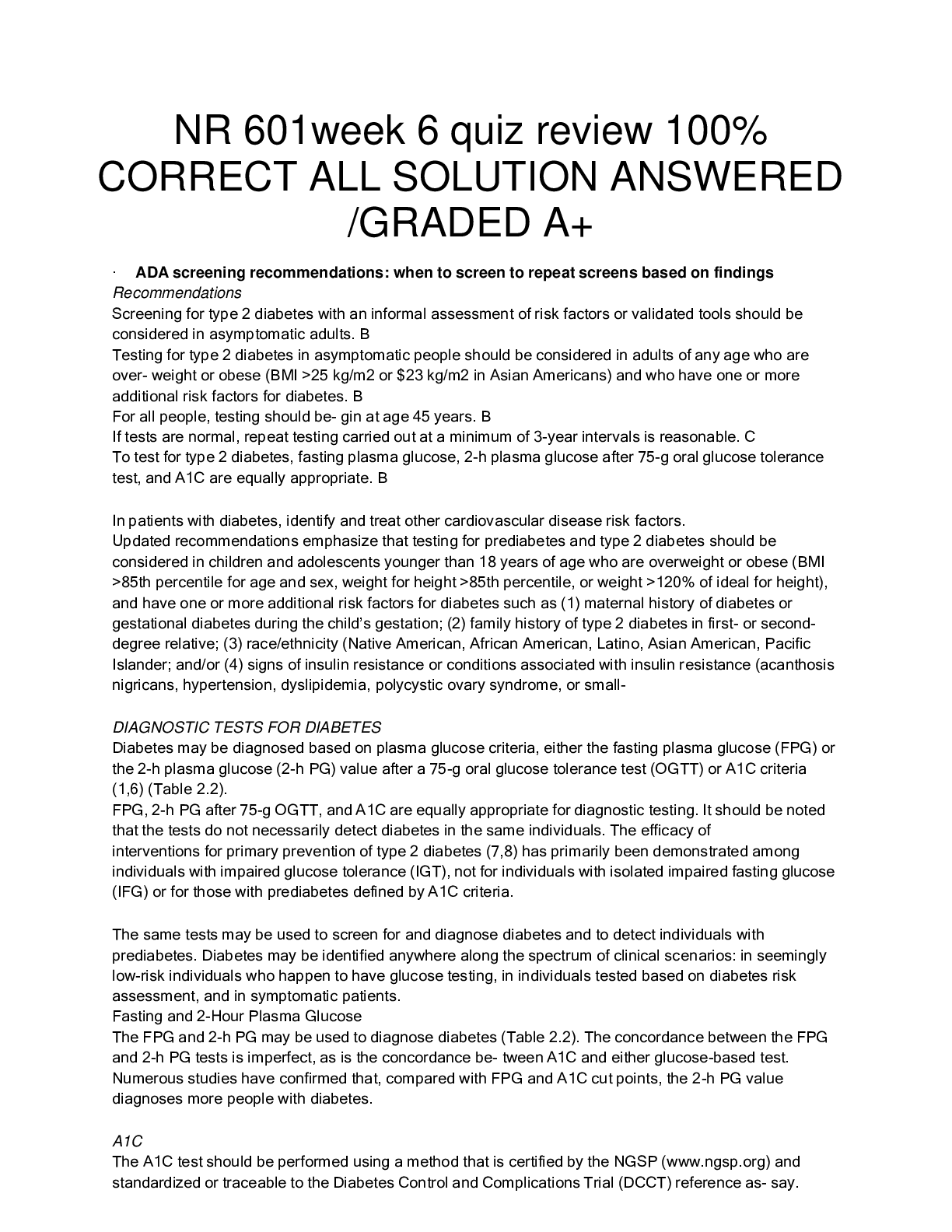

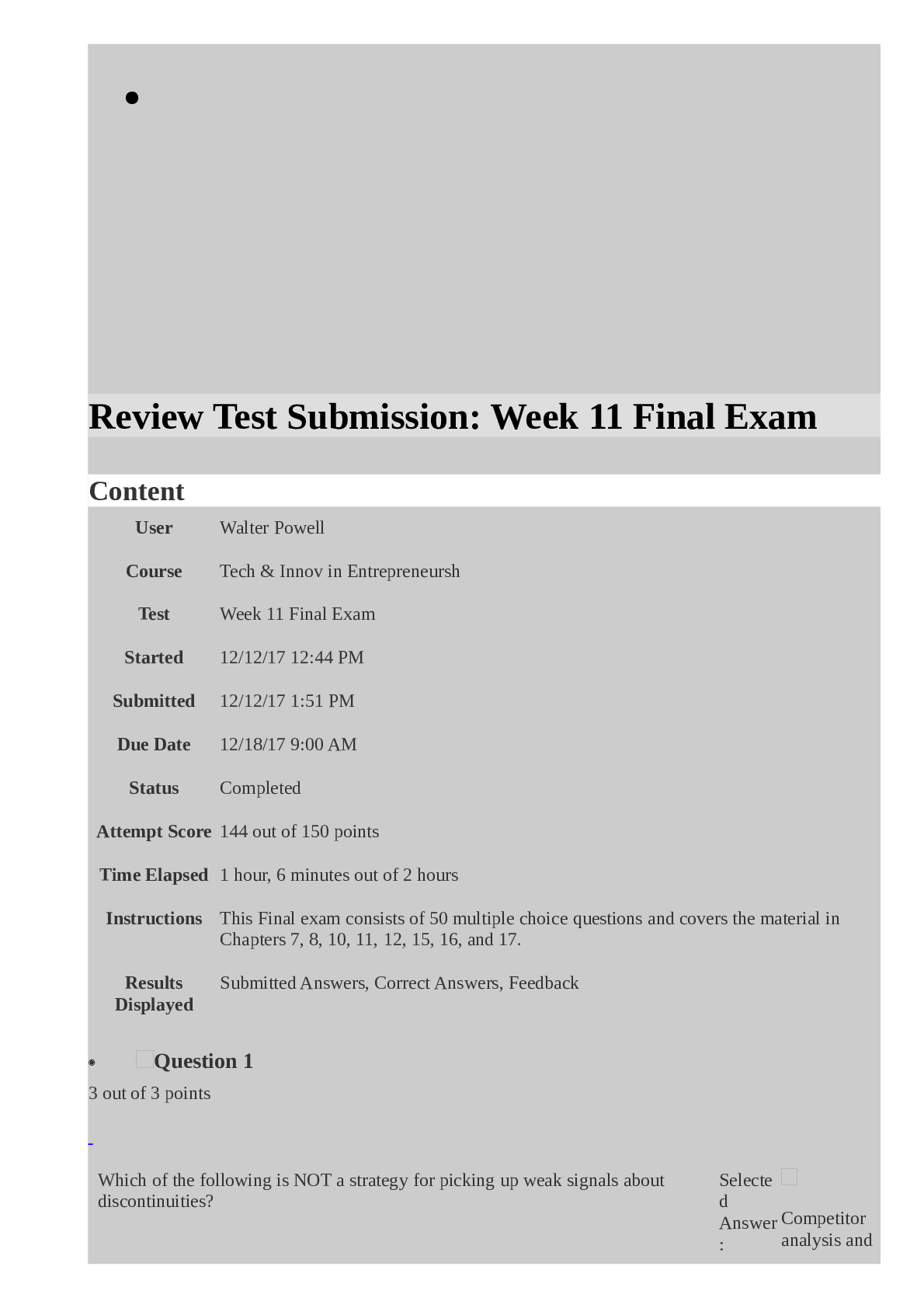
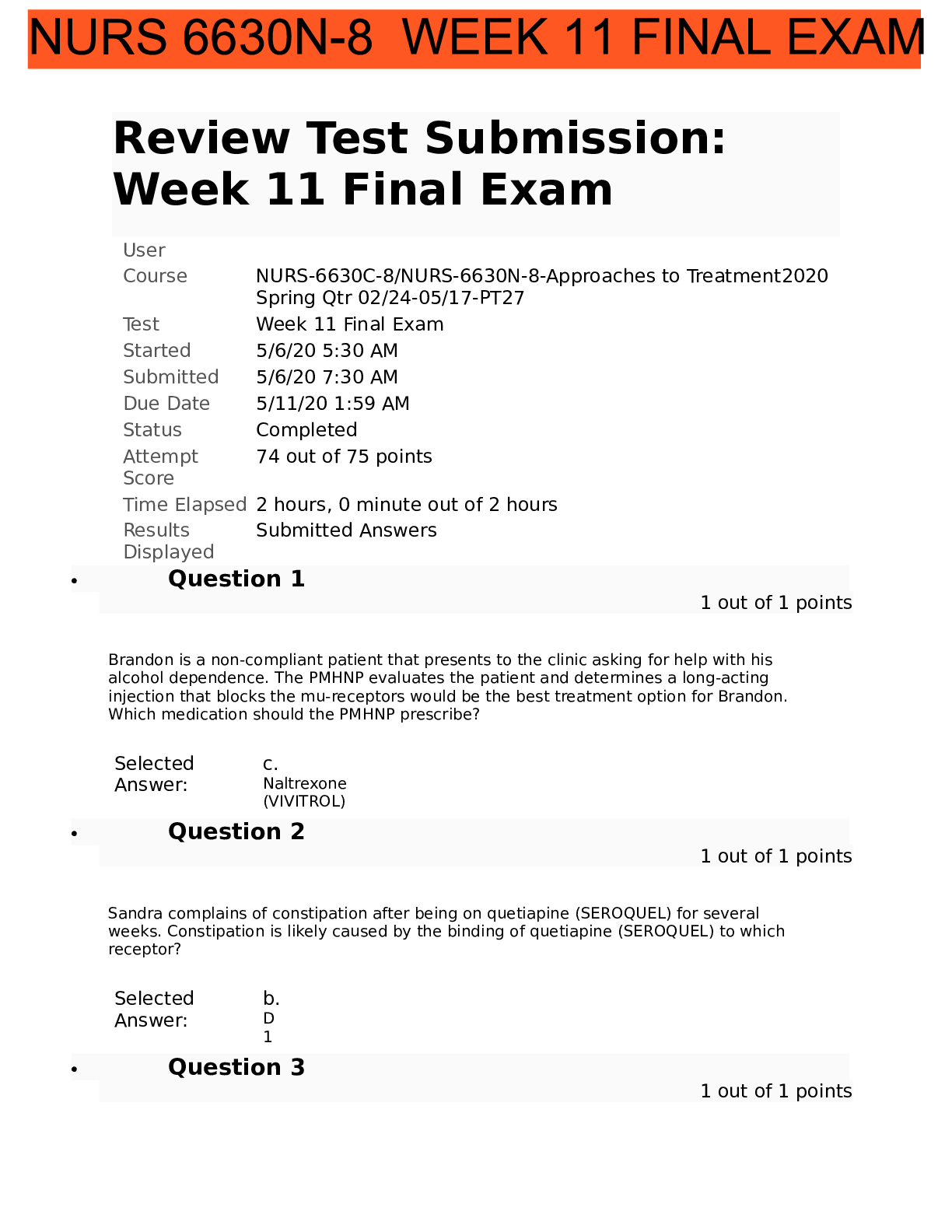
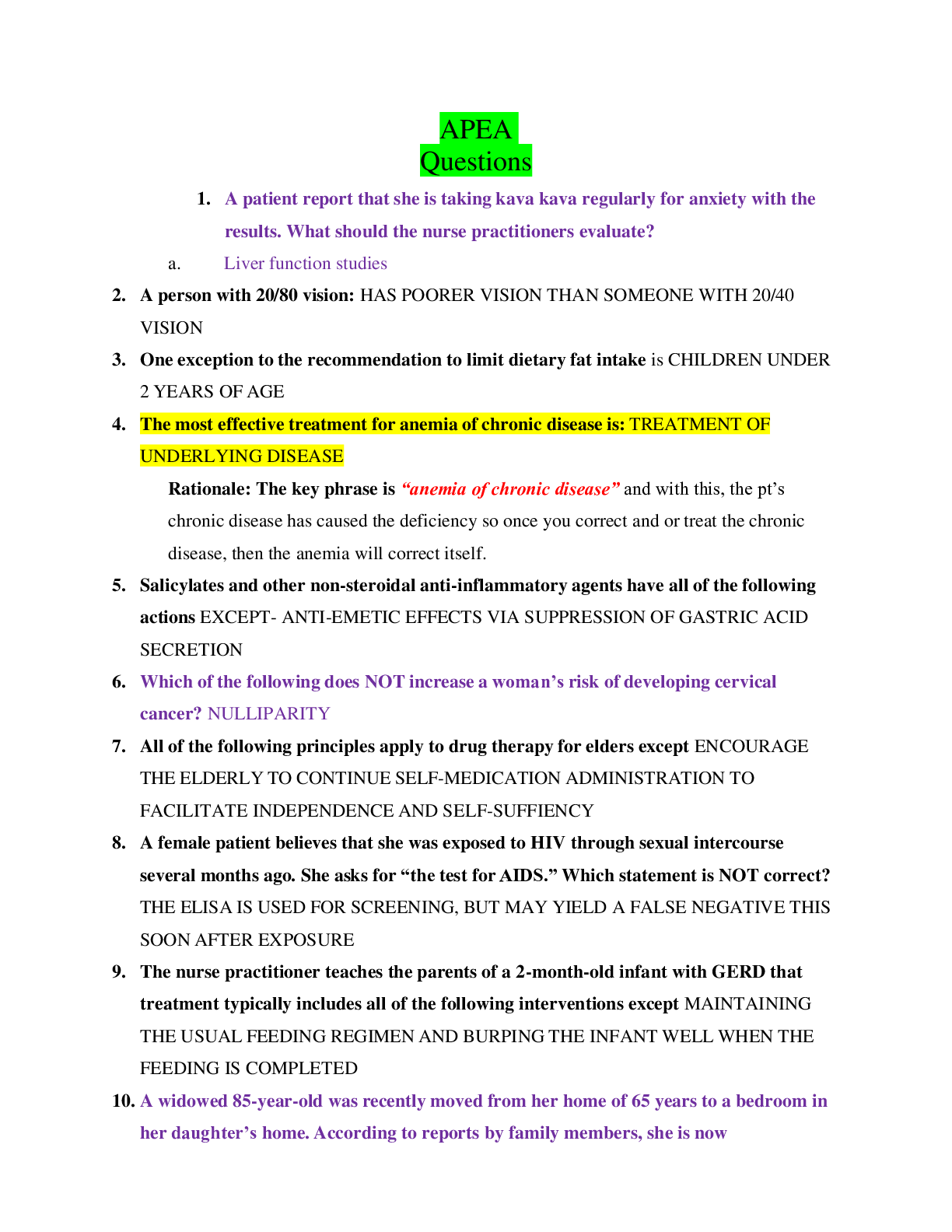
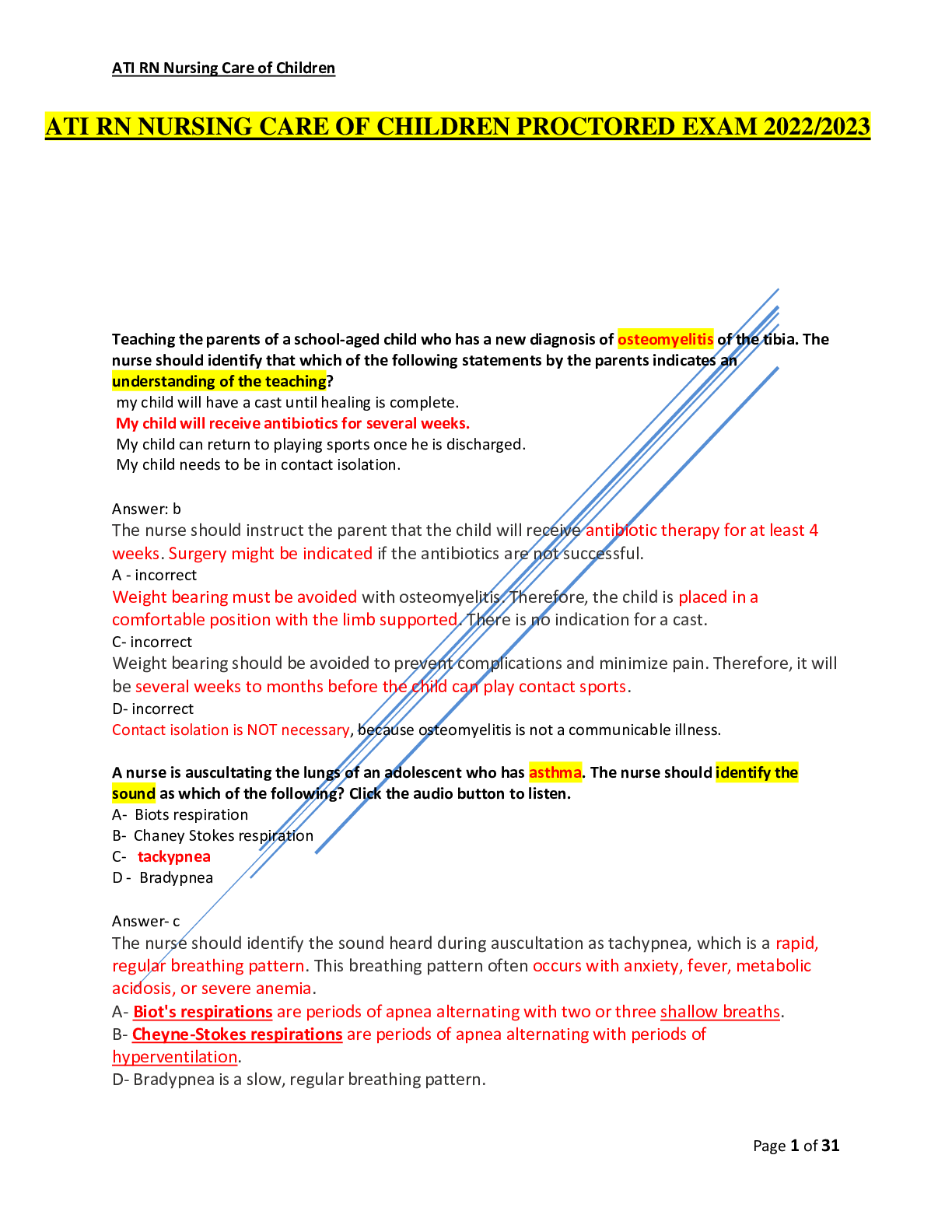

.png)

